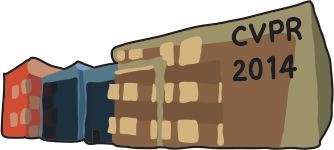-
Learning to Group Objects
AbstractThis paper presents a novel method to generate a hypothesis set of class-independent object regions. It has been shown that such object regions can be used to focus computer vision techniques on the parts of an image that matter most leading to significant improvements in both object localisation and semantic segmentation in recent years. Of course, the higher quality of class-independent object regions, the better subsequent computer vision algorithms can perform. In this paper we focus on generating higher quality object hypotheses. We start from an oversegmentation for which we propose to extract a wide variety of region-features. We group regions together in a hierarchical fashion, for which we train a Random Forest which predicts at each stage of the hierarchy the best possible merge. Hence unlike other approaches, we use relatively powerful features and classifiers at an early stage of the generation of likely object regions. Finally, we identify and combine stable regions in order to capture objects which consist of dissimilar parts. We show on the PASCAL 2007 and 2012 datasets that our method yields higher quality regions than competing approaches while it is at the same time more computationally efficient.
Related Material
[pdf][bibtex]@InProceedings{Yanulevskaya_2014_CVPR,
author = {Yanulevskaya, Victoria and Uijlings, Jasper and Sebe, Nicu},
title = {Learning to Group Objects},
booktitle = {Proceedings of the IEEE Conference on Computer Vision and Pattern Recognition (CVPR)},
month = {June},
year = {2014}
}
These CVPR 2014 papers are the Open Access versions, provided by the Computer Vision Foundation.
Except for the watermark, they are identical to the accepted versions; the final published version of the proceedings is available on IEEE Xplore.
Except for the watermark, they are identical to the accepted versions; the final published version of the proceedings is available on IEEE Xplore.
This material is presented to ensure timely dissemination of scholarly and technical work.
Copyright and all rights therein are retained by authors or by other copyright holders.
All persons copying this information are expected to adhere to the terms and constraints invoked by each author's copyright.

